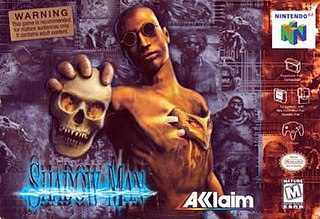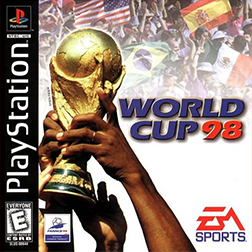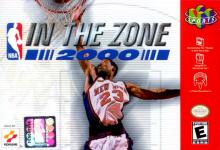Endings
There are three possible endings, depending on how long it takes the player (as Jean-Luc) to reach the control room.
- Good Ending
After killing Jin, one of the Crying Lions bosses, in the generator room, a confrontation emerges between the remaining active S.C.A.T. team members (Jake, Jean-Luc, and Lisa) and the remaining Crying Lions' bosses other than Kenneth Coleman (Cecile and Deathmask). A shootout erupts during which Jake is killed while Lisa is knocked unconscious and taken hostage by Cecile, who subsequently departs. Jean-Luc and Deathmask fight in one-on-one combat, with Jean-Luc emerging the victor and killing Deathmask, before Jean-Luc gives chase to Cecile.
Cecile, realizing that the Crying Lions' main objective is likely to fail with the S.C.A.T. team having penetrated so far into the facility, betrays and kills Kenneth Coleman, so as to take control of the terrorist group and the weaponized satellite to achieve his own ulterior motives: blackmailing the US government into giving him a large sum of money. However, S.C.A.T. team leader Dan arrives at the control room and seemingly kills Cecile. Lisa regains consciousness and is surprised to discover that Dan is working with the Crying Lions, but is again disabled by Dan after he gives her details of how to destroy the satellite.
Upon reaching the satellite control room, Jean-Luc encounters Dan, who reveals he is a traitor, the killer of both Steve and Thomas and forces Jean-Luc into a confrontation. After a fierce battle, Dan is mortally wounded and tells Jean-luc his reasons for betraying the team: he is half-Saroczian. The war split his family in two, his mother and sister defected to Russia with him in tow, whilst his brother and father joined the Saroczian Revolution. Several years later after the separation, he joined the Army and was eventually sent on a mission by the US Forces to keep the government in power by quashing the revolution supported by a majority of the people. The mission was carried out, but Dan was filled with regrets for which he says fate was responsible. He also met his brother, Kenneth Coleman, leader of the Crying Lions who fought to end the suffering of the Saroczian people and avenge his father's death. Dan subsequently dies of his wounds, and Cecile, who survived being shot by Dan earlier, appears and fights one last battle against Jean-Luc in which he is ultimately killed. Once the confrontation is over, Lisa arrives to discover that both Cecile and Dan are dead. Jean-Luc Convinces Lisa to destroy the GULF satellite, believing it is too powerful for any one country to control. The GULF satellite is destroyed as Jean-Luc, Keith, and Lisa escape, with Operation Winback ending in success.
- Normal Ending
The normal ending is similar to the good ending, with a few minor differences.
Jean Luc reaches the area where he fights Jin, but when he does so, Kenneth orders the Pentagon destroyed the satellite, After killing Jin, one of the Crying Lions bosses, in the generator room, a confrontation emerges between the remaining active S.C.A.T. team members (Jake, Jean-Luc, and Lisa) and the remaining Crying Lions' bosses other than Kenneth Coleman (Cecile and Deathmask). A shootout erupts during which Jake is killed while Lisa is knocked unconscious and taken hostage by Cecile, who subsequently departs. Jean-Luc and Deathmask fight in one-on-one combat, with Jean-Luc emerging the victor and killing Deathmask, before Jean-Luc gives chase to Cecile.
Cecile, realizing that the Crying Lions' main objective is likely to fail with the S.C.A.T. team having penetrated so far into the facility, betrays and kills Kenneth Coleman, so as to take control of the terrorist group and the weaponized satellite to achieve his own ulterior motives: blackmailing the US government into giving him a large sum of money. However, S.C.A.T. team leader Dan arrives at the control room and seemingly kills Cecile. Lisa regains consciousness and is surprised to discover that Dan is working with the Crying Lions, but is again disabled by Dan after he gives her details of how to destroy the satellite.
Upon reaching the satellite control room, Jean-Luc encounters Dan, who reveals he is a traitor, the killer of both Steve and Thomas and forces Jean-Luc into a confrontation. After a fierce battle, Dan is mortally wounded and tells Jean-luc his reasons for betraying the team: he is half-Saroczian. The war split his family in two, his mother and sister defected to Russia with him in tow, whilst his brother and father joined the Saroczian Revolution. Several years later after the separation, he joined the Army and was eventually sent on a mission by the US Forces to keep the government in power by quashing the revolution supported by a majority of the people. The mission was carried out, but Dan was filled with regrets for which he says fate was responsible. He also met his brother, Kenneth Coleman, leader of the Crying Lions who fought to end the suffering of the Saroczian people and avenge his father's death. Dan subsequently dies of his wounds, Jean-Luc looks down at Dan's body, asking him if he found the justice he was looking for. He then sadly says if Dan had just told them, they might have found a way to help, but now it is too late, Cecile is presumed to either have died of the wounds inflicted on him by Dan or survived and had gotten away. Once the confrontation is over, Lisa arrives to discover that Dan is dead. Jean-Luc Convinces Lisa to destroy the GULF satellite, believing it is too powerful for any one country to control. The GULF satellite is destroyed as Jean-Luc, Keith, and Lisa escape, with Operation Winback ending in partial success.
- Bad Ending
Jean-Luc finds both Lisa and Jake dead in the generator room, both presumably killed by Jin, the elusive (bad ending) Crying Lions boss whom Jean-Luc faces and kills in the generator room should he arrive fast enough (the good ending). Upon reaching the satellite control room, Jean-Luc finds Cecile waiting for him. Cecile tells Jean-Luc that he was too late, the satellite has already fired twice, destroying the Pentagon and White House. Jean-Luc confronts and kills Cecile and goes to the communications room to find Kenneth Coleman, pleased that his "objective" and "cause" was a success. After some talk, Kenneth shoots himself. Jean-Luc and Keith are the only survivors of Operation Winback, which is ultimately a failure.




















